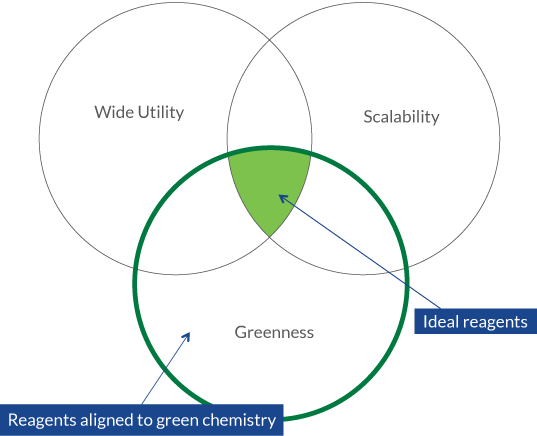
The reagent guides purpose is to encourage chemists to choose a ‘greener’ choice of reaction conditions. The guides aim to achieve this by providing transparency through the use of Venn diagrams in addition to improving understanding by discussion and up to date references.
In line with the green chemistry roundtables core values, these guides aim to assist chemists in making informed decisions when picking the most sustainable reagent for any transformation at hand.
The guides have been compiled by enthusiastic industrial multidisciplinary chemists who have scaled many of the methods.
While the guides are designed to promote green chemistry, the aim is also for them to serve as a convenient reference and as such are not limited to only those reagents considered ‘green’.
Good green chemistry requires the chemist to look across a range of factors before making the best choice. With the inclusion of information such as atom efficiency, ecotoxicology / toxicology profiles, safety issues, waste products, sustainable feedstocks, and more, we hope these guides give obvious promotion of some reagents compared to others. However, a holistic approach is encouraged. For example, if a ‘greener’ reagent gives a much lower yield or requires multiple steps the overall benefit may be limited (i.e higher footprint in the wider context) in contrast to an initially less green reagent.